The Unique Mechanisms of Cellular Proliferation, Migration and Apoptosis are Regulated through Oocyte Maturational Development-A Complete Transcriptomic and Histochemical Study
- PMID: 30587792
- PMCID: PMC6337548
- DOI: 10.3390/ijms20010084
The Unique Mechanisms of Cellular Proliferation, Migration and Apoptosis are Regulated through Oocyte Maturational Development-A Complete Transcriptomic and Histochemical Study
Abstract
The growth and development of oocyte affect the functional activities of the surrounding somatic cells. These cells are regulated by various types of hormones, proteins, metabolites, and regulatory molecules through gap communication, ultimately leading to the development and maturation of oocytes. The close association between somatic cells and oocytes, which together form the cumulus-oocyte complexes (COCs), and their bi-directional communication are crucial for the acquisition of developmental competences by the oocyte. In this study, oocytes were extracted from the ovaries obtained from crossbred landrace gilts and subjected to in vitro maturation. RNA isolated from those oocytes was used for the subsequent microarray analysis. The data obtained shows, for the first time, variable levels of gene expression (fold changes higher than |2| and adjusted p-value < 0.05) belonging to four ontological groups: regulation of cell proliferation (GO:0042127), regulation of cell migration (GO:0030334), and regulation of programmed cell death (GO:0043067) that can be used together as proliferation, migration or apoptosis markers. We have identified several genes of porcine oocytes (ID2, VEGFA, BTG2, ESR1, CCND2, EDNRA, ANGPTL4, TGFBR3, GJA1, LAMA2, KIT, TPM1, VCP, GRID2, MEF2C, RPS3A, PLD1, BTG3, CD47, MITF), whose expression after in vitro maturation (IVM) is downregulated with different degrees. Our results may be helpful in further elucidating the molecular basis and functional significance of a number of gene markers associated with the processes of migration, proliferation and angiogenesis occurring in COCs.
Keywords: cellular competence; microarray; oocytes; pig.
Conflict of interest statement
The authors declare no conflict of interest.
Figures
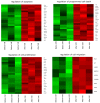

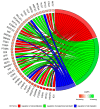


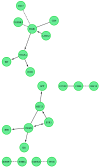

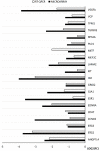
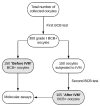
Similar articles
-
"Cell Migration" Is the Ontology Group Differentially Expressed in Porcine Oocytes Before and After In Vitro Maturation: A Microarray Approach.DNA Cell Biol. 2017 Apr;36(4):273-282. doi: 10.1089/dna.2016.3425. Epub 2017 Feb 16. DNA Cell Biol. 2017. PMID: 28384068
-
Differences in cumulus cell gene expression indicate the benefit of a pre-maturation step to improve in-vitro bovine embryo production.Mol Hum Reprod. 2016 Dec;22(12):882-897. doi: 10.1093/molehr/gaw055. Epub 2016 Aug 24. Mol Hum Reprod. 2016. PMID: 27559149
-
Genes of cellular components of morphogenesis in porcine oocytes before and after IVM.Reproduction. 2017 Oct;154(4):535-545. doi: 10.1530/REP-17-0367. Epub 2017 Jul 21. Reproduction. 2017. PMID: 28733345
-
Despite the donor's age, human adipose-derived stem cells enhance the maturation and development rates of porcine oocytes in a co-culture system.Theriogenology. 2018 Jul 15;115:57-64. doi: 10.1016/j.theriogenology.2017.12.024. Epub 2017 Dec 12. Theriogenology. 2018. PMID: 29709724 Review.
-
Failure to launch: aberrant cumulus gene expression during oocyte in vitro maturation.Reproduction. 2017 Mar;153(3):R109-R120. doi: 10.1530/REP-16-0426. Epub 2016 Nov 22. Reproduction. 2017. PMID: 27879344 Review.
Cited by
-
"Biological Adhesion" is a Significantly Regulated Molecular Process during Long-Term Primary In Vitro Culture of Oviductal Epithelial Cells (Oecs): A Transcriptomic and Proteomic Study.Int J Mol Sci. 2019 Jul 10;20(14):3387. doi: 10.3390/ijms20143387. Int J Mol Sci. 2019. PMID: 31295879 Free PMC article.
-
Seasonal environmental fluctuations alter the transcriptome dynamics of oocytes and granulosa cells in beef cows.J Ovarian Res. 2024 Oct 14;17(1):201. doi: 10.1186/s13048-024-01530-0. J Ovarian Res. 2024. PMID: 39402580 Free PMC article.
-
Integrative proteome analysis implicates aberrant RNA splicing in impaired developmental potential of aged mouse oocytes.Aging Cell. 2021 Oct;20(10):e13482. doi: 10.1111/acel.13482. Epub 2021 Sep 28. Aging Cell. 2021. PMID: 34582091 Free PMC article.
-
Expression of mRNAs for pro-and anti-apoptotic factors in granulosa cells and follicular fluid of women undergoing in vitro fertilization. A pilot study.BMC Pregnancy Childbirth. 2021 May 24;21(1):399. doi: 10.1186/s12884-021-03834-1. BMC Pregnancy Childbirth. 2021. PMID: 34030662 Free PMC article.
-
Whole-genome SNP markers reveal conservation status, signatures of selection, and introgression in Chinese Laiwu pigs.Evol Appl. 2020 Sep 16;14(2):383-398. doi: 10.1111/eva.13124. eCollection 2021 Feb. Evol Appl. 2020. PMID: 33664783 Free PMC article.
References
-
- Sinha P.B., Tesfaye D., Rings F., Hossien M., Hoelker M., Held E., Neuhoff C., Tholen E., Schellander K., Salilew-Wondim D. MicroRNA-130b is involved in bovine granulosa and cumulus cells function, oocyte maturation and blastocyst formation. J. Ovarian Res. 2017;10:37. doi: 10.1186/s13048-017-0336-1. - DOI - PMC - PubMed
-
- Kempisty B., Ziółkowska A., Ciesiółka S., Piotrowska H., Antosik P., Bukowska D., Nowicki M., Brüssow K.P., Zabel M. Study on connexin gene and protein expression and cellular distribution in relation to real-time proliferation of porcine granulosa cells. J. Biol. Regul. Homeost. Agents. 2014;28:625–635. - PubMed
MeSH terms
Substances
Grants and funding
LinkOut - more resources
Full Text Sources
Research Materials
Miscellaneous

